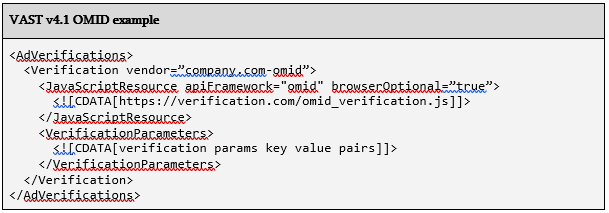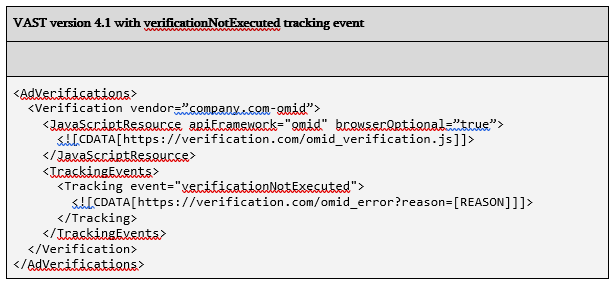By Jon Guarino and Phil Harris
Digital Video Ad Standard Template (VAST) 4.0 represented an essential rethinking of third-party verification on video inventory. Previously, running measurement code was possible only through Video Player-Ad Interface Definition (VPAID) media files, which would necessarily obscure and delay the actual creative content. This also meant that verification vendors became responsible for playback, rather than simply acting as an observer. The only alternative to this setup was for each vendor to maintain a number of bespoke solutions with individual players.
With the introduction of the AdVerification node in VAST 4.0, it became possible to reference verification resources while removing them from the critical rendering path. But VAST 4.0 was incomplete – a new API was required to describe how this new integration should actually work.
One early plan that the Digital Video Technical Working Group looked into was redefining VPAID to fit the new paradigm. However, a more universal solution presented itself with the parallel development of the Open Measurement SDK (OMSDK) and the Open Measurement Interface Definition (OMID). This project was originally intended to enable verification specifically in mobile apps (including video formats). However, with planning and coordination between the working groups, we were able to ensure that OMID would be an appropriate API to use for video inventory everywhere.
With VAST 4.1 and the latest revisions to AdVerification, it is now possible to include OM third-party verification code with your video ad that will be able to measure whether it is served to a web site, an app, or anywhere else OMID is available.
The below examples demonstrate how verification providers can structure their tags to ensure that they are selected for measurement within the supported environments.

The introduction of a new optional VerificationParameters node allows for vendors to define external data required for their vendor script in order to execute and collect measurement signals.
It is also now possible to be notified by a VAST 4.1-compliant player when verification code fails to execute for any reason. A new verificationNotExecuted tracking event can provide insight into these situations (e.g. when OMID is not yet supported).

ABOUT THE AUTHORS

Jon Guarino
Senior Software Engineer, Google
Jon is a software engineer on DoubleClick verification and reporting teams. He has a passion for technology and design, and is happy to work with the IAB Tech Lab to help write robust standards that bring the industry forward.

Phil Harris
Manager of Engineering, Integral Ad Science